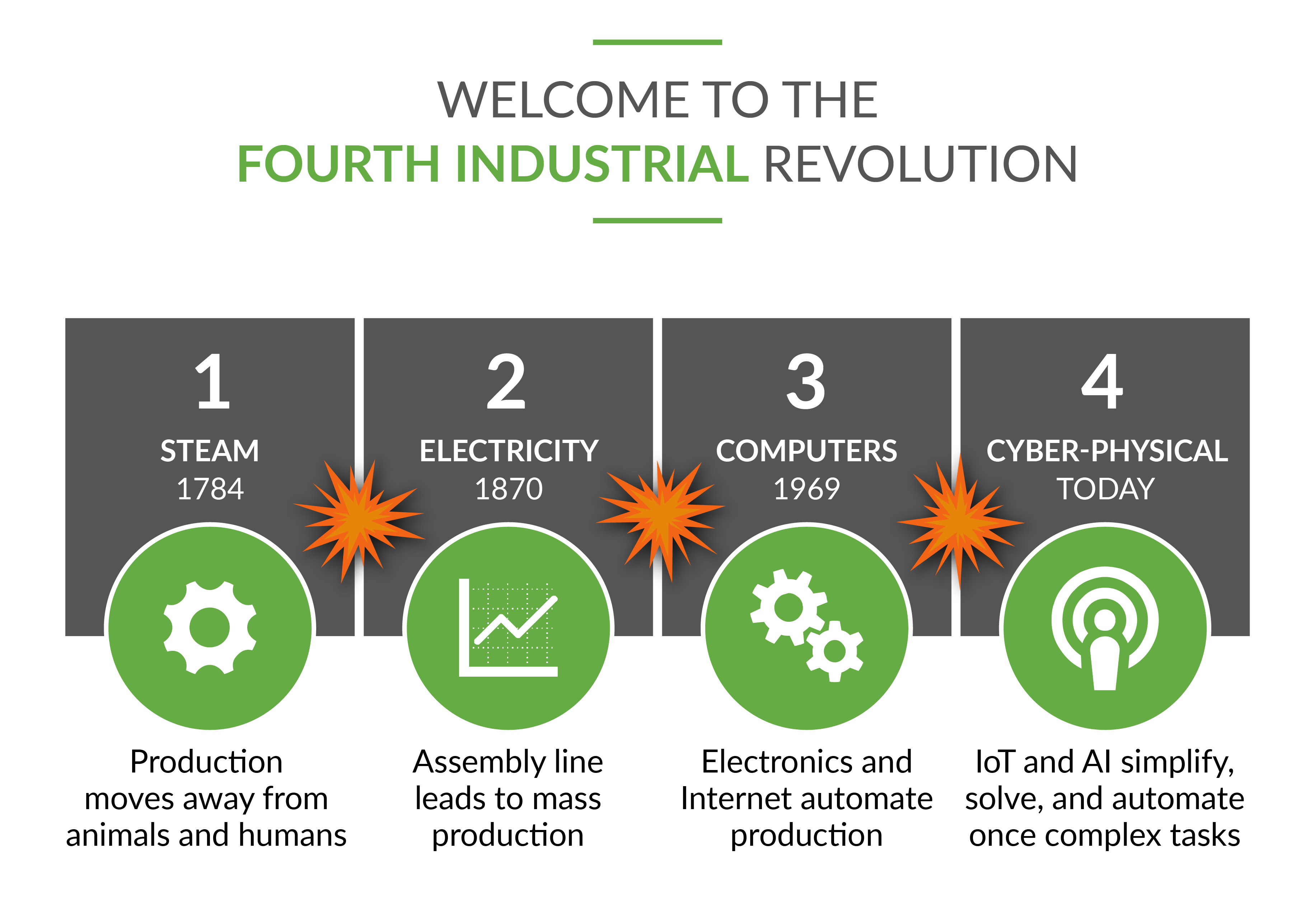In a recent episode of the Banking on Digital Growth podcast, James Robert shared insights around marketing in the Age of AI. He began with a little history to introduce his analysis of future growth from a marketing perspective.
Back to the Future: What the Past May Help Predict About the Future
To quote Doc from Back to the Future, "Where we're going, we don't need roads."

We're now in the process of realizing the fourth industrial revolution, or the Age of AI. As shared in episode 6, here is a brief summary of the previous three industrial ages:
- Starting in the late 1700s: Steam and water powered this first industrial revolution. These energy sources provided fuel for transportation and mechanical tools. At the same time, they replaced many wind-, animal-, and people-powered vehicles and machines.
- Starting about the 1870s: Electricity sparked the second revolution. This better source of energy could power mass production and new technology better than steam and water power.
- Starting in the 1960s to 1970s: Electronics and computing power began to dramatically change business and even personal lives. It's also worth noting that the internet helped stimulate the information age, beginning about the 1990s.
- Today: Today, artificial intelligence and machine learning offer keys to progress in almost every industry and even the way people live and work. Machines can do more than just automate physical work; they can also automate decisions to some degree.
It took about 100 years between the first three notable information ages, James Robert emphasized.
Today, change has accelerated.
Dramatic differences appear within decades or years. It no longer takes centuries.
It's only been about 25 years since the internet really took root until today's innovations: AI, machine learning, the IoT, augmented and virtual learning, and much more.
While the speed of innovations has alarmed some folks, James Robert views it through the optimistic lens that these inventions can help provide better solutions to problems and improve both business and personal lives.
Do Troubled Times Accelerate Progress?
Think about past industrial revolutions.
They appear to arise during times of conflict and crisis.
For the first, which largely started in Britain, there was the American Revolution.
For the second, the U.S. Civil War. During the 1960s, America endured a great deal of civil unrest because of the Vietnam War and the struggle for civil rights.
Disruptive events today include political divisions and of course, the coronavirus pandemic.
Troubled times tend to also breed great progress. Perhaps it's just an observation about human nature that dramatic problems tend to generate even more dramatic solutions. Just look how fast scientists have come up with potential coronavirus vaccines, compared to developing medicine in the past.
With that in mind, it's fair to predict that we may see change accelerated even more.
The Big Strategic Advantage in the Age of AI
All of this underscores that the biggest strategic advantage during this new age won't necessarily be the technology itself.
Instead, it's using these advances in an empathic way that helps improve the lives of customers and in turn, businesses.

For example, AI and automation allow businesses to communicate on a large scale. At the same time, those that can communicate at scale and still establish one-on-one relationships will have a huge advantage.
As technology has empowered businesses, it has also given people more control. The consumers have the power to determine which messages they receive.
Effective marketing and sales have never really been about the businesses that they work to promote. To work, they have to reach consumers by helping them to solve problems or support worthy causes. They have to deliver solutions when consumers want them and not when a business needs to boost revenues.
Developing the right relationships with their market will give any sort of company an advantage of its competitors.
The Four Keys to Marketing in the Age of AI
James Robert laid out four key areas for marketers to focus upon in this new age:
- Communication: People either want help with their current situation or hope to meet future goals. A marketing message needs to communicate a "hope or help" message to people in order to engage them.
- Content: Content provides the fuel for digital growth in the form of advertisements, emails, website landing pages, etc. However, that content needs to spread the right messages, based upon what consumers want or need.
- Coaches: Rather than seeing themselves as product pushers, the sales team should establish themselves as advisors and coaches. Since consumers have more choices and control, it's particularly important to emerge as a trusted guide and not a pushy salesperson or a mere order taker.
- Channels: Digital marketing channels must help marketers demonstrate more empathy. If we can gain a better understanding in to someone's financial behavior or mindset through their buying and spending patterns, we can use that insight and information to provide them with recommendations.
Automation has not replaced the need to develop connections with customers, and successful businesses must learn to use it explore consumer needs and then serve them.
Using Technology to Develop More Empathy and Not Less
Not so long ago, almost everybody visited their local bank to conduct business. They developed relationships with tellers and bankers, and they probably knew most of the bank employees by name.
These days, people are just as likely to conduct their business online or by phone, without ever matching people to faces. To attract and maintain customers, banks have to work even harder to connect with patrons.
Here's the thing. By studying history, it's fairly easy to see that rapid changes have emerged from challenging times.
At the same time, those changes generated even more disruption.
When steam-powered ships replaced sailing ships, shipbuilders and sailors either got displaced or needed retraining.
Still, the change occurred gradually, so perhaps, more wind-powered ships and sailors got to gracefully retire while their coal-fired and trained replacements took places on new steamships.
Today, change happens much faster, which breeds more anxieties and concerns about the future.
Brands that can use their new resources to help people learn how they can experience these changes as progress and not just disruption will find an eager audience.
As the entire world grows more digital, it still has to remain centered on meeting the needs of consumers.
This article was originally published on January 13, 2021. All content © 2024 by Digital Growth Institute and may not be reproduced by any means without permission.





